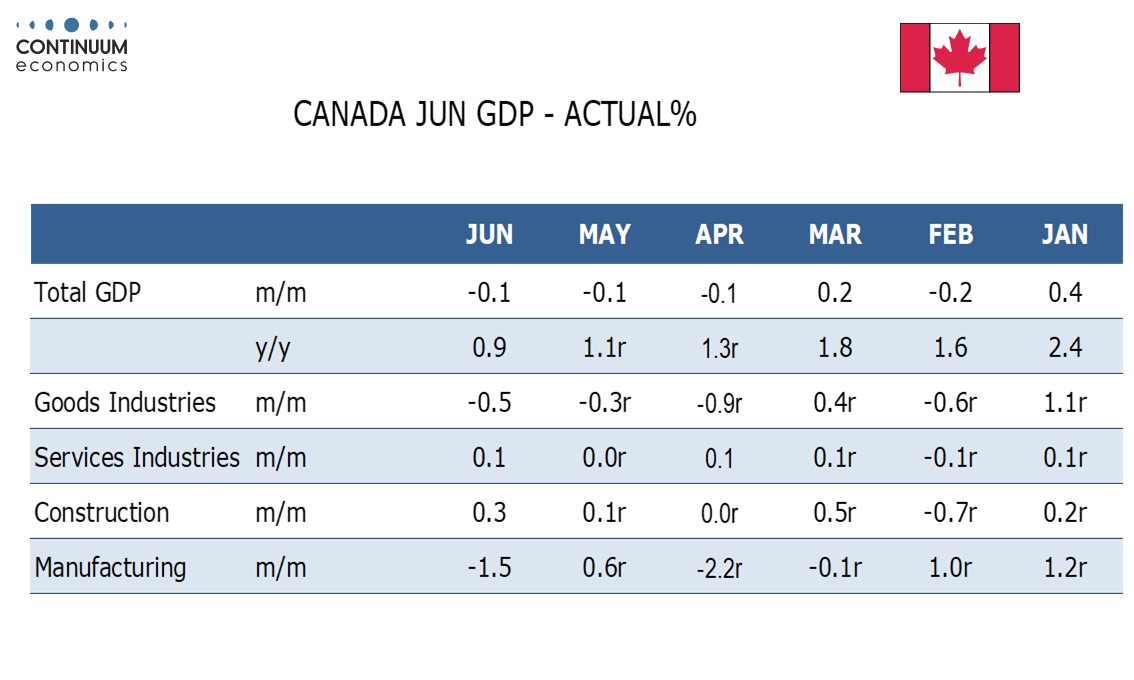Canada Q2 GDP falls as exports plunge outweighs stronger domestic demand
Canada’s 1.6% annualized decline in Q2 GDP is weaker than the market expected, though in line with a -1.5% Bank of Canada forecast. Details are mixed with domestic demand positive and the GDP decline due to a plunge in exports due to US tariffs. June GDP was weaker than expected with a 0.1% decline, though the preliminary estimate for July is for a 0.1% increase.
The data increases the risk of a Bank of Canada easing in September, particularly after a reasonably subdued July CPI, though August employment and CPI data are still to be seen. The GDP decline however will not have come as a surprise to the BoC and there are some positives in the detail.
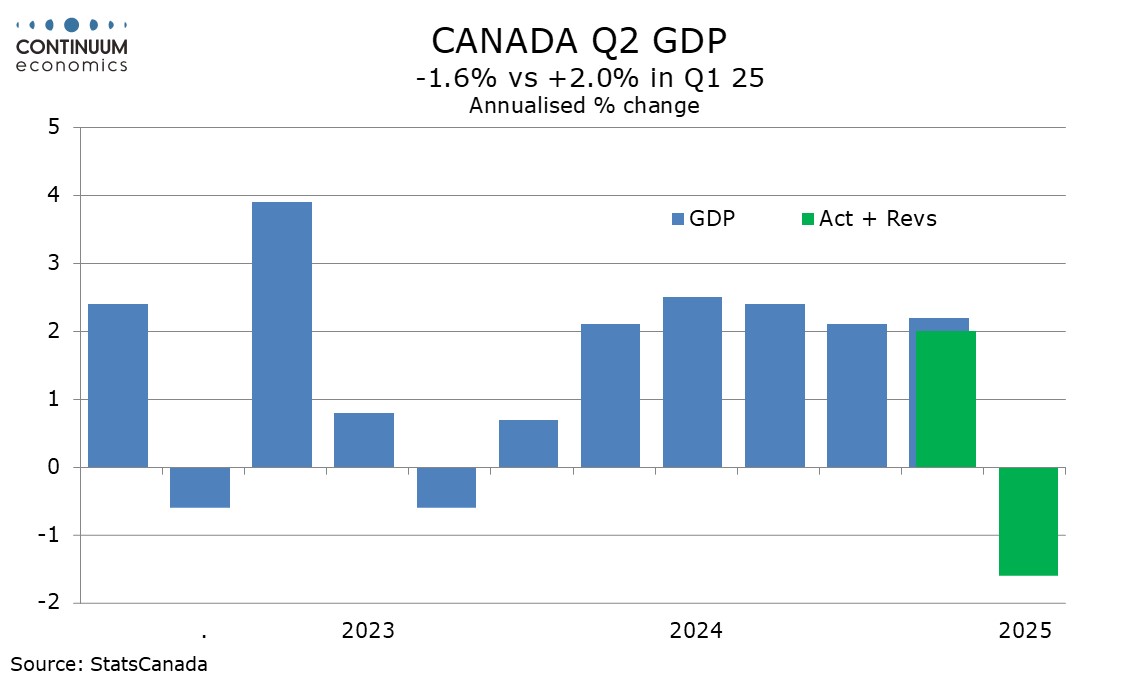
Domestic demand is getting support from BoC easing, rising by 3.5% annualized, while external demand is being hit by tariffs. Household consumption rose by a strong 4.5% while residential investment rose by 6.3%. Government was firm with a 5.1% rise in consumption and a surge of 8.8% in fixed capital formation.
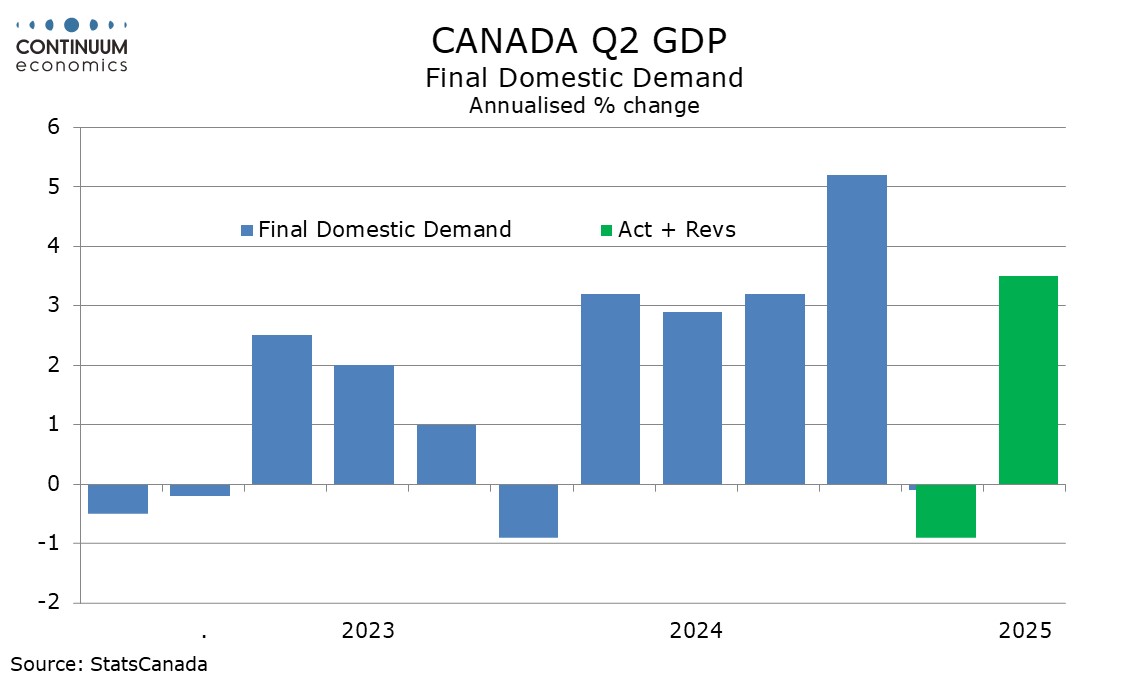
Business investment is however weak, intellectual property down a modest 0.5% and structures, machinery and equipment plunging by 10.1%. This means a second straight negative from business fixed capital formation even with the rise in residential.
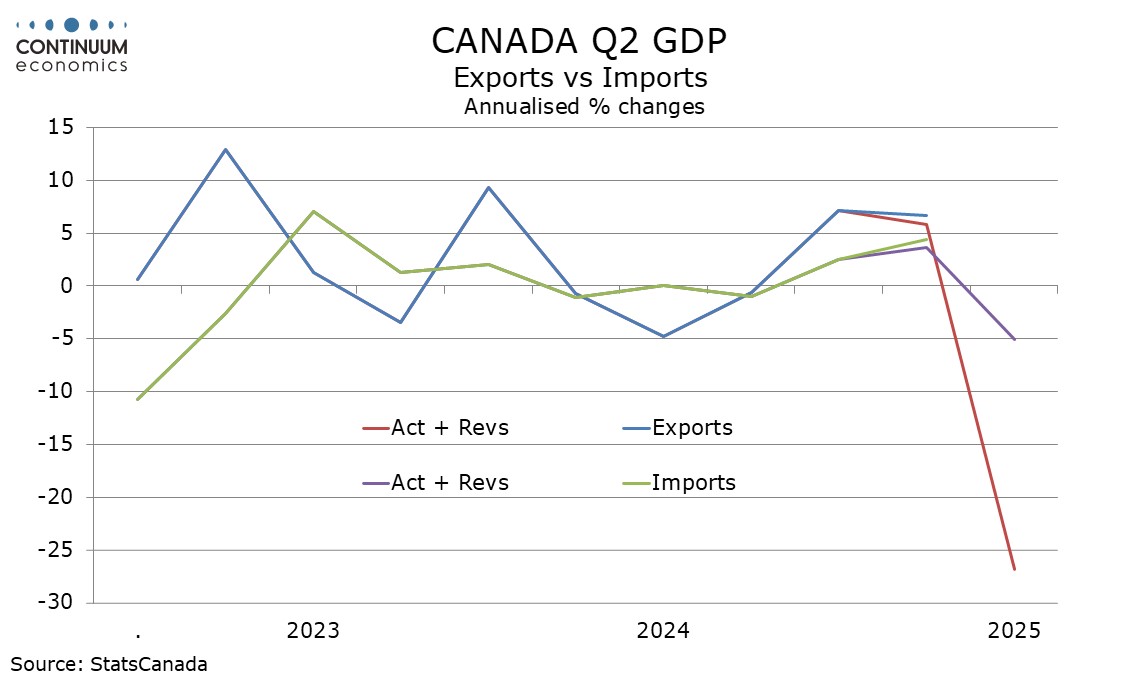
The weakness in GDP is due to a 26.8% plunge in exports. Imports with a 5.1% drop were a positive to GDP as was a rise in inventories. The GDP deflator was unchanged on the quarter, seeing yr/yr growth slip to 2.2% from 3.3%.
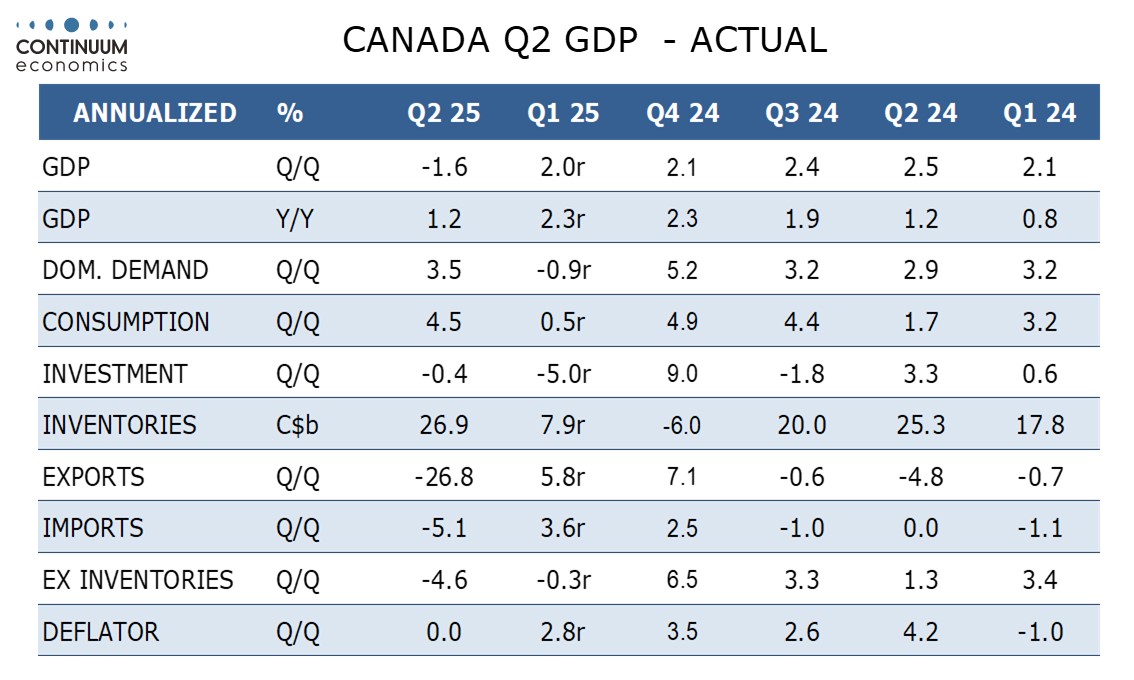
The monthly data shows GDP weakness is being led by goods, down 0.5% for a third straight monthly decline, with exports-sensitive manufacturing sliding by 1.5%, Services rose by a modest 0.1% after a flat May and a 0.1% rise in April.
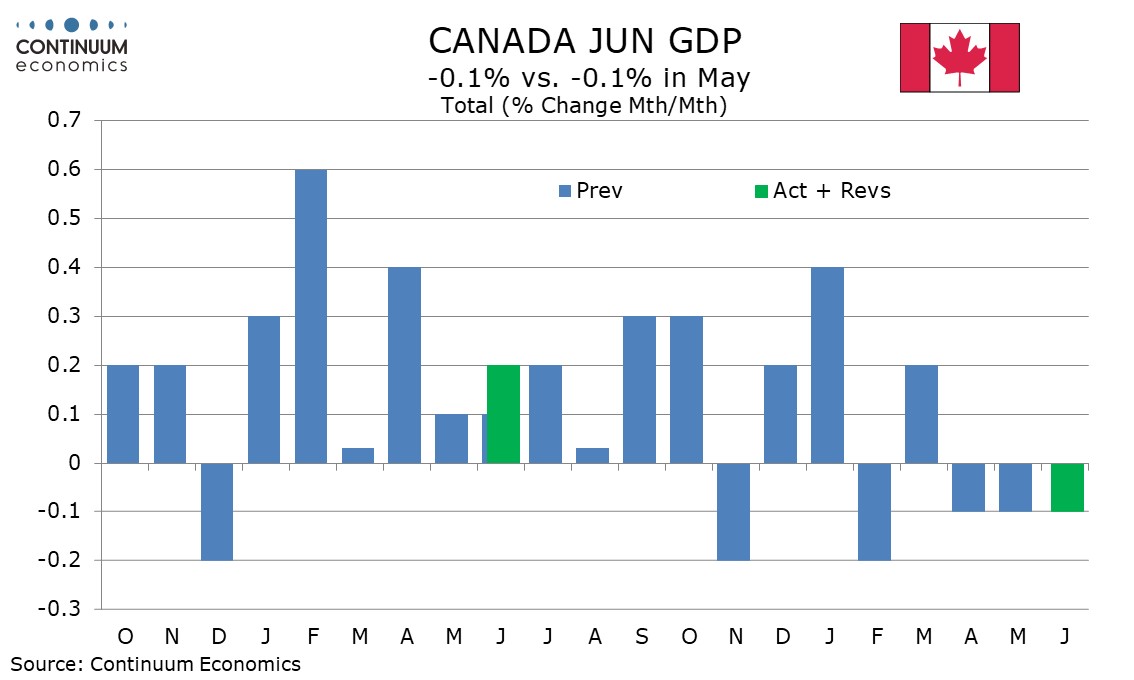
A preliminary estimate for a 0.1% increase in July sees increases in real estate and rental and leasing, mining and quarrying and wholesale, partially offset by a drop in retail.
